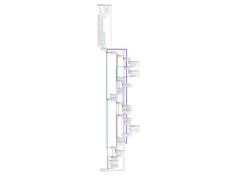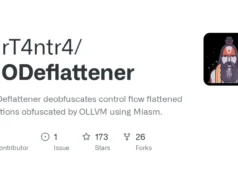In the ever-evolving game of cybersecurity, encrypted shellcode injection emerges as a formidable method to sidestep defenses.
This article unveils the “Caro Kann Defense”—a savvy technique designed to evade memory scans, drawing inspiration from the world of chess.
Dive in to uncover the strategy behind this stealthy approach. Encrypted shellcode Injection to avoid memory scans triggered from Kernel (ETWti / Kernel Callbacks).
Specific combinations of Windows APIs, e.g. for injection into a remote process can lead to a memory scan:

Typically, the scan can be triggered from Userland via hooks on the execute primitive such as NtCreateThreadEx.
But more and more EDR vendors also tend to trigger scans from Kernel, for example after the Kernel Callback PsSetCreateThreadNotifyRoutine() a scan could be triggered.
But what if there is no executable memory section with known malicious code? Well, no alert for an detection I guess.
The idea is as follows:
- Inject encrypted known malicious payload into an
RWsection - Inject custom non known malicious shellcode into an
RXsection - Create a remote Thread on the second shellcode

The custom shellcode will than:
- Sleep for an amount x (to avoid memory scans triggered by the execute primitive of Thread creation)
- Decrypt the first known malicious shellcode
- Protect the section from
RWtoRX - Make a direct
JMPto the known malicious shellcode

Setup
On linux, the PIC-Code was found to be compiled correctly with mingw-w64 version version 10-win32 20220324 (GCC).
With that version installed, the shellcode can be compiled with a simple make and extracted from the .text section via bash extract.sh.
If you’d like to compile from Windows, you can use the following commands:
as -o adjuststack.o adjuststack_as.asm
gcc ApiResolve.c -Wall -m64 -ffunction-sections -fno-asynchronous-unwind-tables -nostdlib -fno-ident -O2 -c -o ApiResolve.o -Wl,--no-seh
gcc DecryptProtect.c -Wall -m64 -masm=intel -ffunction-sections -fno-asynchronous-unwind-tables -nostdlib -fno-ident -O2 -c -o decryptprotect.o -Wl,--no-seh
ld -s adjuststack.o ApiResolve.o decryptprotect.o -o decryptprotect.exe
gcc extract.c -o extract.exe
extract.exeYou also need to have Nim installed for this PoC.
After installation, the dependencies can be installed via the following oneliner:
nimble install winim ptr_mathThe PoC can than be compiled with:
nim c -d:release -d=mingw -d:noRes CaroKann.nim # Cross compile
nim c -d:release CaroKann.nim # WindowsAny payload can be XOR encrypted with the given encrypt.cpp code:
Usage: encrypter.exe input_file output_fileThe encrypted payload can than be embedded in the PoC via the following line:
const shellcode = slurp"<encrypted.bin>"OPSec Improvement Ideas
- Bypass Userland-Hooks for Injection (although not really needed, but for fun)
- Back Payload(s) by legitimate DLL (Module Stomping)
- Load C2-Dlls via the first Shellcode – which can avoid memory scans triggered by module loads
- Use ThreadlessInject or DLLNotificationInjection instead of Remote Thread Creation
OPSec considerations For C2-Payloads
- Should use Sleep encryption, otherwise the payload will get flagged later
- Should use Unhooking first or (in)direct Syscalls
- Should use Proxy module loading

















